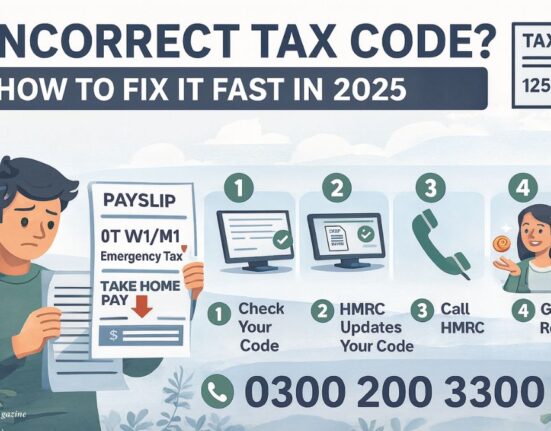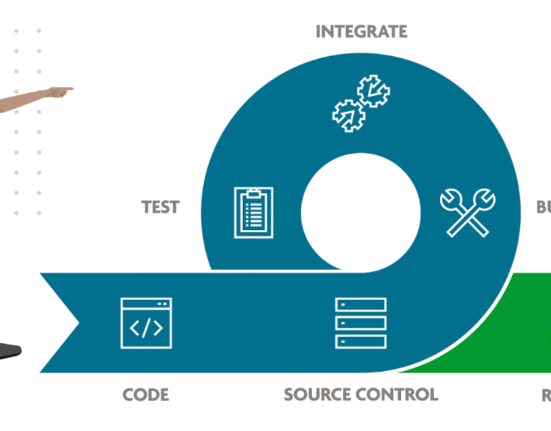Have you ever opened your payslip, seen the numbers, and thought, “Wait… where did all my money go?” You’re not alone. A lot of people never check their tax code, and that little mix of numbers and letters is quietly deciding how much tax you pay every month. Get it wrong, and you could be sending HMRC more than you should — or worse, building up a surprise bill for later.
The best part? You can fix it yourself. Whether you’ve just started a new job, switched to a pension, or spotted an emergency tax code on your payslip, changing it is easier than most people think. This guide will walk you through everything — step-by-step — so you can keep more of your hard-earned money where it belongs: in your pocket.
What is a Tax Code and Why It Matters
A tax code is usually made up of numbers and letters (e.g., 1257L, BR, 0T) that tells your employer how much tax-free income you can have before you start paying tax.
Here’s what some common tax codes mean:
- 1257L – The standard tax code for most UK employees in 2025, giving you a tax-free personal allowance of £12,570.
- BR – Basic rate tax on all your income, usually applied to a second job or pension.
- 0T – No personal allowance is applied, often used if HMRC doesn’t have enough details about you.
- Emergency tax codes – Temporary codes like 1257L W1 or M1, used when your full details aren’t yet confirmed.
Your tax code matters because it directly affects your taxable income — and ultimately, your take-home pay. Get it wrong, and you could be losing hundreds of pounds a year.
Signs Your Tax Code Might Be Wrong
If you’re unsure whether your code is correct, here are some red flags:
- Your payslip shows lower-than-expected pay.
- You’ve received a coding notice from HMRC that doesn’t match your circumstances.
- You’ve started or left a job and your code hasn’t updated.
- You’re on an emergency tax code or 0T tax code without explanation.
- Your tax deductions are higher than colleagues earning the same.
A wrong tax code doesn’t always mean you’re losing money — sometimes you might be underpaying, which could mean a large bill later.
Why HMRC Might Change Your Tax Code
HMRC updates tax codes when your income or benefits change. Common triggers include:
- Starting or leaving a job or pension.
- Beginning to receive the state pension.
- Having multiple jobs or income sources.
- Changes in taxable benefits (company car, medical insurance, etc.).
- Incorrect or outdated employment details in HMRC’s records.
If HMRC changes your tax code without telling you, you should still receive a coding notice explaining the reason — but mistakes can happen, which is why regular checks are important.
How to Change Your Tax Code – Step-by-Step
Changing your tax code involves two main steps: checking it and telling HMRC if it’s wrong.
A) Check Your Current Tax Code
You can find your tax code on:
- Your payslip (usually near your National Insurance number).
- Your P45 or P60 forms.
- Your personal tax account on GOV.UK.
HMRC also provides a tax code checker online to help you understand what your code means.
B) Gather the Right Information
Before contacting HMRC, make sure you have:
- Your employer or pension provider’s name and PAYE reference.
- Details of your current and expected income.
- Any recent HMRC letters, coding notices, or payslips.
C) Contact HMRC to Update Your Code
There are three main ways to request a change:
- Online – The fastest method. Log into your personal tax account and update your employment details.
- By Phone – Call the HMRC tax code contact number (0300 200 3300 in the UK) — you can find the latest numbers on the HMRC Income Tax enquiries page.
- By Post – Send supporting documents with a written request to HMRC.
How to Change Tax Code Online – The Fastest Way
Here’s how to update your code in minutes:
- Go to UK and log into your personal tax account.
- Select “Check your Income Tax”.
- Click “Update your employment details”.
- Provide your employer/pension provider’s info and your latest income details.
- Submit the changes — HMRC usually updates your code within 2–6 weeks.
Special Cases: 0T Tax Code & Emergency Tax Code
0T Tax Code
This means you’re not getting any personal allowance. It’s often used if HMRC doesn’t have your latest P45 or employment details. If you think it’s wrong, update your records immediately.
Emergency Tax Code
If you see 1257L W1, M1, or X on your payslip, you’re on an emergency code. This usually happens when you start a new job and your employer doesn’t yet have your tax history. Once HMRC gets your details, they’ll switch you to the correct code — and you may get a tax refund.
After Changing Your Tax Code – What to Expect
Once HMRC processes your update:
- Your employer/pension provider will apply the new code to your next payslip.
- If you’ve overpaid, you’ll get an automatic tax refund (often in your next pay).
- If you’ve underpaid, HMRC will collect the extra tax gradually.
- Always double-check your code at the start of each tax year to avoid surprises.
FAQs
Q: How long does it take to change a tax code?
Usually between 2–6 weeks, depending on how you contact HMRC. Online is fastest.
Q: Can my employer change my tax code?
No, only HMRC can issue a new code. Your employer just applies the one HMRC sends.
Q: Will I get a tax refund automatically if my code was wrong?
Yes, if you’ve overpaid, HMRC will send it automatically after updating your code.
Q: Do I need to change my code every year?
Not necessarily, but it’s smart to check it at the start of each tax year or after major life changes.
Final Words
Your tax code might not be the most exciting thing to think about — but it’s one of those small details that can make a big difference to your finances. Spend a few minutes checking the list of tax codes and what they mean HMRC, and you could avoid months of overpaying tax or dealing with surprise deductions later.
If you’ve noticed you’re on the wrong code — whether it’s a 0T tax code, an emergency tax code, or something that just doesn’t look right — don’t wait for HMRC to fix it. Take action today.
The sooner you update it, the sooner you’ll see the difference in your payslip… and that’s always a good feeling.
Visit: Pure Magazine








